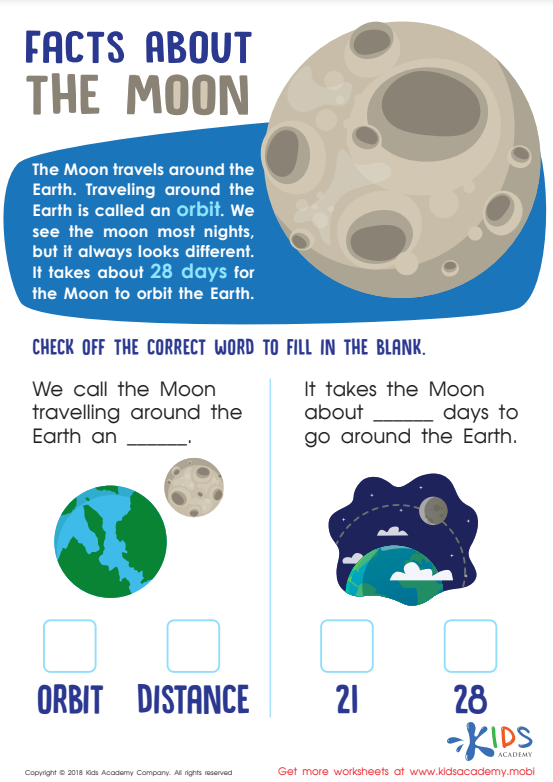Science. 1st Grade. Introducing Astronomy to Kids
May 30, 2022
Astronomy is a complex but an amazing subject. It covers both Physics and Mathematics while pumping up the inquisitiveness of children. Teaching Astronomy to your first grader can help his/her interest in Science flourish. It is through this discipline that children will be able to further appreciate the concepts of time, distance, gravity, and size of objects. Astronomy also renders an introductory glimpse on the concepts of matter and energy.
Astronomy is a very interesting subject in its own right. It is quite easy to catch the interest of a young learner just by introducing the thought of Earth being a tiny speck throughout the galaxy. Regardless, engaging your child in an astronomical discussion is much more effective through fun and productive activities such as stargazing and a trip to a planetarium. This article by Kids Academy is aimed at helping parents and teachers alike conduct a seamless pedagogical approach towards introducing Astronomy to kids in Grade 1.
What Is Astronomy?
In simple terms, Astronomy is all about the science of everything from beyond Earth’s atmosphere all the way to the endless corners of the universe. The content of the course covers the planets, asteroids, comets, stars, and galaxies encompassing the concepts of matter and energy of all heavenly bodies. It is through Astronomy that your child in the 1st grade will be able to grasp an in-depth comprehension on what the stars and solar system are all about - their distances from Earth and from each other as well as the science behind their appearance as we look at them with our naked eye or through a telescope.
To further fire up your child’s interest, you can let him/her work on Observing the Sky worksheet which is designed to help a child become more familiarized with the differences between day and night. On the other hand, the Astronomer Maze worksheet introduces the proper tools used by astronomers.
Stars - Our Light in the Night Sky
Take your child out in your backyard and let themr lie flat on your lawn facing the night sky. You can also simply let him/her gaze at the sky through their bedroom’s window. Let your child enjoy a moment of silence as he/she gazes with amazement on the twinkling objects in the heavens. More often than not, your child, as naturally curious as they can ever be, will start bombarding you with ‘what’, ‘how’, and ‘where’ questions.
What are stars?
Most of the twinkling bright lights that you see in the clear night sky are stars. These are gigantic balls of gasses that are mostly made up of hydrogen and helium. The closest star to Earth is the Sun which is the only sun in the solar system. With a diameter of 864,000 miles, the sun is considered a medium-sized star. The smallest stars are categorized as red dwarfs which are just about the size of Jupiter. On the other hand, the largest stars are known as the hypergiants. It takes about 1,000 suns to equal the size of these colossal balls of gasses.
How do stars emit light?
Stars such as our sun are able to emit light due to the continuous nuclear fusion reactions that take place deep down in the core. With the compression of two hydrogen atoms into a single helium atom, light and heat energy are released. The light energy from these stars appears to wobble as it travels through various layers of the Earth’s atmosphere. Hence, the twinkling stars.
Where are the stars?
As mentioned earlier, the nearest star to Earth is the Sun at a distance of 151 million kilometers. If you are to ride a jumbo jet towards the Sun, it would take around 19 years before you will be able to reach your destination. The rest of the stars in the universe that we get to see at night are light years away. In perspective, one light year is equivalent to nine trillion kilometers.
Star Clusters - Constellations
All in all, there are about 200 billion trillion stars in the universe. The Milky Way Galaxy, which is home to the Solar System, contains around 100 thousand million stars and the naked human eye can only marvel at around 5,000 stars. Depending on how far they are and how they appear from Earth, the stars are grouped together which eventually form familiar patterns known as constellations.
See if your child has understood the lesson and give him/her the task of accomplishing the worksheets Stars and Constellations and Night Sky Search.
There are about 88 known constellations as recognized by the International Astronomical Union or IAU. Of all these star clusters, some shine brighter and are therefore more prominent in the night sky. These seven major constellations are the Ursa Major, Cassiopeia, Orion, Canis Major, Centaurus, Crux, and Carina.
Moon, Comets, and Asteroids
Other important heavenly bodies covered in Grade 1 Astronomy are the Moon, comets, and asteroids. Some planets in the solar system have natural satellites or smaller heavenly bodies that orbit planets. The earth only has one natural satellite which is commonly referred to as the moon. In terms of its size, the moon is just a quarter of Earth’s diameter but plays a crucial role in our planet’s climate and tides.
On the other hand, the comet and the asteroid are two astronomical objects that are often mistaken to be one of the same. A comet is made up of ice and dust whereas an asteroid is made up of metals and rocks. Generally, comets are smaller than asteroids but the former travels faster than the latter. Conclude your discussion by letting your young astronomer test their skills through these fun worksheets - Moon Journal and Facts About the Moon.
















